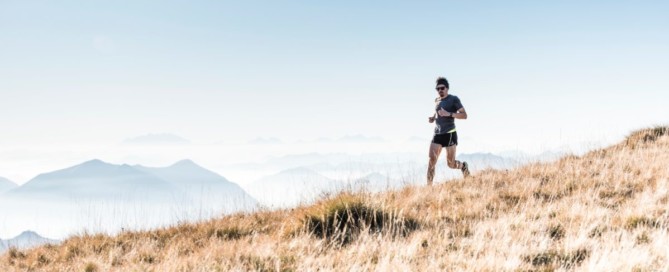To me, as we spring forward to daylight savings time (except for our friends in Arizona and Hawai’i), it signals a time to start trail running again! I have a lot of respect for those who brave the storms in the cold, wet wintertime, but I find myself enjoying trail running quite a bit more when it warms up and there’s more daylight to play with. The winter months are a great time for me to keep up my base fitness while burning off those pesky holiday calories, but now that the majority of the polar vortex has passed and Punxsutawney Phil has seen no shadow, it’s time to hit the trails! Here’s what you need to get you started.
Trail Running Shoes
First and foremost, it’s in your best interest to have a pair of trail running shoes. Your road shoes might be brand new with all of their rubber still intact, but trail shoes take traction to another level. They’ll have higher, more durable lugs underfoot to grip wet or dry surfaces more effectively, and nowadays, most are specifically angled to help with climbs and descents. They will have more durable uppers while protecting your feet from uneven terrain, using stiffer soles. Trail shoes are essential to a better trail running experience!
Nutrition and Hydration
Another important thing to consider is your nutrition and hydration. Unlike many roads and paved city paths, there are generally fewer water fountains on the trails, and if there are, they’re going to be spread out a bit further. Also, trail running can be unpredictable — a wrong turn can extend your run by a couple miles, and certain climbs can be a lot tougher than they look on a map. I often find myself being out on trail runs longer than predicted, and when that happens, I’m always glad that I brought water and food with me. I recommend bringing a bottle of water as well as some gels or chews, if nothing else, in case of an emergency. You don’t want to be stranded out there or be dehydrated or out of fuel at any point.
A Way to Reach Out
It is encouraged to bring identification and/or your phone for safety purposes! Again, trail running is unpredictable, and you want the necessary safety precautions like name, emergency contact, and a means to contact somebody, just in case. Since trails are more removed from people and cities, you want the ability to get help in emergency situations.
Apparel
Last but not least, you want to have some kind of body protection. For me, that means a light, packable jacket (for cold, rain, or wind), a hat or buff (for sun protection), sunglasses, and long socks (quarter or crew rather than no-show) to keep out dirt, rocks and any kind of overgrown foliage on the trail. I like being a bit more covered when I’m out on the trails as I’ve had my fair share of cuts and scrapes from the unpredictable nature of trail conditions and the elements. It’s best to be over prepared than under prepared!
There are certainly more things to consider when starting to trail run, but they’re more so things you learn and find more personally necessary than others (watches, hydration systems, etc.). Whatever you end up valuing, just get out there and have fun exploring the trails!


